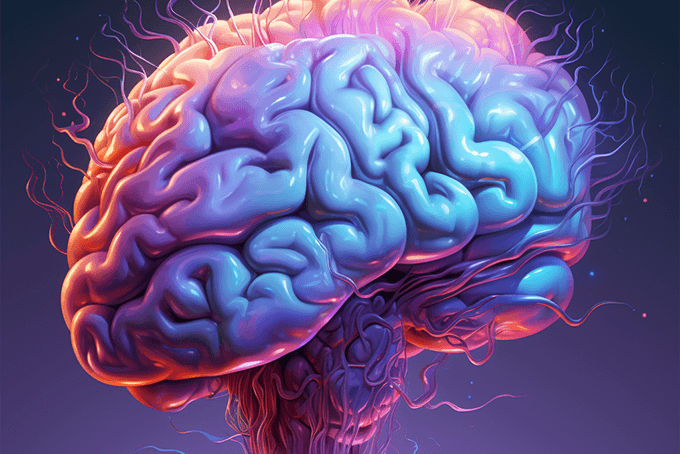Are you someone who learns best through hands-on experiences and physical activities? If so, you may be a kinesthetic learner. In this ultimate guide, we will explore the different aspects of kinesthetic learning, including its definition, the science behind it, and strategies to help you succeed academically. We will also discuss the tools and resources available to support your learning style and provide practical tips for overcoming the challenges of kinesthetic learners.
Understanding Kinesthetic Learning
Definition of Kinesthetic Learning
Kinesthetic learning is a learning style that emphasizes physical movement, touch, and hands-on activities as the primary means of understanding and remembering information. Kinesthetic learners often benefit from actively engaging with their environment and using their sense of touch to explore and discover concepts.
These learners thrive in interactive settings where they can manipulate objects, conduct experiments, and physically experience the concepts being taught. For example, in a science class, kinesthetic learners may excel in experiments that involve building models or conducting hands-on investigations to understand scientific principles.
The Science Behind Kinesthetic Learning
Research has shown that kinesthetic learning engages multiple regions of the brain simultaneously, enhancing memory retention and cognitive development. When kinesthetic learners participate in activities that involve movement and physical manipulation, they activate both the motor and sensory parts of the brain, leading to more effective learning outcomes. This style of learning is particularly effective in subjects such as science, mathematics, and physical education.
Furthermore, studies have indicated that kinesthetic learners often have strong spatial awareness and hand-eye coordination due to their preference for physical activities. This heightened awareness can translate into improved problem-solving skills and a deeper understanding of abstract concepts when they are able to physically interact with the material.
Identifying a Kinesthetic Learner
Common Traits of Kinesthetic Learners
Kinesthetic learners often demonstrate certain characteristics that distinguish them from other learning styles. They tend to have a strong sense of body awareness, enjoy physical activities, and prefer hands-on experiences. They may have difficulty sitting still for long periods and may learn best when allowed to move and engage with their environment.
Furthermore, kinesthetic learners are often skilled at learning through physical manipulation and experimentation. They may excel in subjects like science and art, where they can actively participate in experiments or create tangible projects to enhance their understanding. This hands-on approach allows kinesthetic learners to fully immerse themselves in the learning process and retain information more effectively.
Misconceptions About Kinesthetic Learners
There are some misconceptions about kinesthetic learners that need to be addressed. One common misconception is that kinesthetic learners are only suited for careers that involve physical labor or athletics. This is not true, as kinesthetic learners can excel in any field when provided with the appropriate learning environment and tools.
Another misconception is that kinesthetic learners have a short attention span. While they may struggle to concentrate in traditional lecture-style settings, they can thrive when provided with interactive and hands-on learning opportunities. In fact, kinesthetic learners often have a keen sense of observation and can absorb information more effectively when they are actively engaged in the learning process.
Strategies for Kinesthetic Learners
Effective Study Techniques
As a kinesthetic learner, incorporating movement into your study routine can significantly enhance your understanding and retention of information. Some effective study techniques for kinesthetic learners include:
- Taking frequent study breaks to engage in physical activities, such as stretching or walking
- Using flashcards or hands-on manipulatives to practice and review concepts
- Creating mind maps or diagrams to visually represent information
Kinesthetic learners often find that incorporating physical movement into their study routine not only helps them stay engaged but also improves their ability to remember and apply information. By actively engaging their bodies while learning, kinesthetic learners can create stronger connections between their physical movements and the concepts they are studying.
Incorporating Movement into Learning
When learning new concepts, kinesthetic learners benefit from incorporating movement into their learning process. Some strategies to consider include:
- Acting out scenarios or role-playing to understand complex concepts
- Using physical objects or models to visualize abstract ideas
- Participating in hands-on experiments or interactive simulations
Engaging in physical activities while learning can help kinesthetic learners internalize information more effectively. For example, acting out historical events or scientific processes can make abstract concepts more concrete and memorable. Additionally, using physical objects or models to represent ideas can provide kinesthetic learners with a tactile way to interact with and understand complex information.
Tools and Resources for Kinesthetic Learners
Essential Tools for Active Learning
To support your kinesthetic learning style, it is essential to have access to tools and resources that promote active learning. Some essential tools for kinesthetic learners include:
- Fidget tools or stress balls to help channel excess energy
- Ergonomic seating options, such as stability balls or kneeling chairs
- Manipulatives, such as puzzles or building blocks, to enhance hands-on learning experiences
In addition to these tools, incorporating movement breaks into your study routine can significantly benefit kinesthetic learners. Taking short breaks to engage in physical activities like stretching, walking, or even dancing can help improve focus and retention of information. These movement breaks not only cater to your learning style but also promote overall well-being.
Online Resources for Kinesthetic Learners
The internet provides a wealth of resources specifically designed for kinesthetic learners. Online platforms offer interactive learning modules, virtual labs, and videos that cater to various subjects and grade levels. Some recommended websites for kinesthetic learners include:
Furthermore, exploring educational YouTube channels that focus on hands-on demonstrations and experiments can be a valuable addition to your learning toolkit. Channels like “Science Max” and “Sick Science!” provide engaging content that allows kinesthetic learners to see concepts in action and participate in virtual experiments. These visual and interactive resources can complement traditional study materials and enhance your understanding of complex topics.
Overcoming Challenges as a Kinesthetic Learner
Dealing with Traditional Learning Environments
In traditional learning environments, kinesthetic learners may find it challenging to stay engaged and focused. It is crucial to communicate your learning preferences with your teachers and explore alternative strategies that accommodate your kinesthetic learning style. Some approaches to consider include:
- Requesting opportunities for hands-on activities or experiments
- Using movement breaks or stretching exercises during long lectures
- Taking notes using color-coded pens or highlighting key points
However, it’s important to note that overcoming challenges as a kinesthetic learner goes beyond just adapting to traditional learning environments. It also involves understanding the unique characteristics and strengths associated with this learning style.
Kinesthetic learners are known for their physicality and need for movement. This means that sitting still for long periods of time can be incredibly difficult and may hinder their ability to absorb information effectively. To address this, teachers and students can explore innovative approaches that integrate movement into the learning process.
Staying Focused and Engaged
To maintain focus and engagement during studying or classroom activities, kinesthetic learners can try the following techniques:
- Creating a study environment that allows for movement, such as using a standing desk or sitting on an exercise ball
- Breaking down tasks into smaller, manageable steps to prevent feeling overwhelmed
- Teaching the material to someone else, which reinforces understanding through physical verbalization
By incorporating movement and physical engagement into their study routines, kinesthetic learners can enhance their learning experience and improve their retention of information. For example, using a standing desk allows for more freedom of movement, which can help kinesthetic learners stay focused and energized while studying.
Additionally, breaking down tasks into smaller steps can help kinesthetic learners feel a sense of accomplishment as they progress through each stage. This approach not only prevents them from feeling overwhelmed but also allows them to engage with the material in a more hands-on manner.
Conclusion
Remember, as a kinesthetic learner, you have unique strengths and learning preferences that can be harnessed to achieve academic success. By understanding the science behind kinesthetic learning, identifying your individual traits, employing effective study techniques, and utilizing the appropriate tools and resources, you can overcome challenges and maximize your learning potential. Embrace your kinesthetic learning style and explore new ways to bring movement and engagement into your educational journey.



